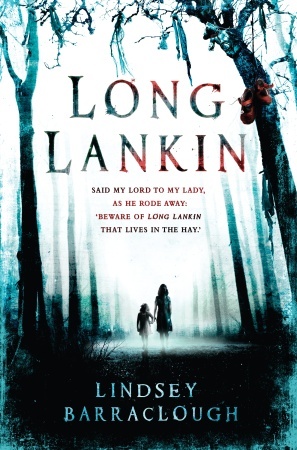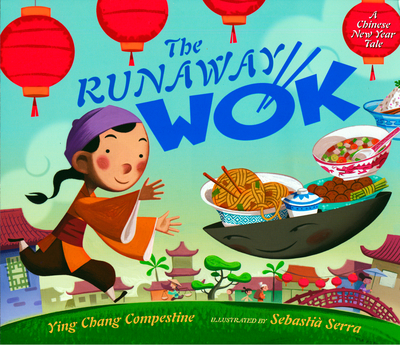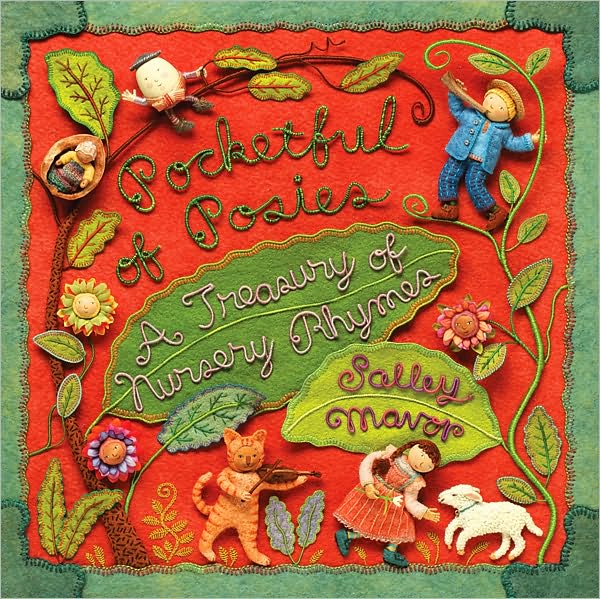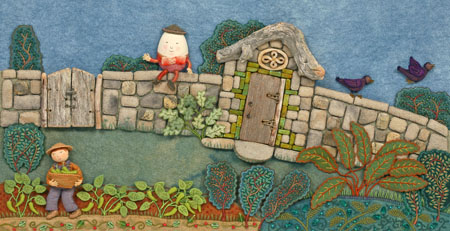 Goldilocks and the Three Bears is a family favorite; I think I own more retellings of it than any other story (with the possible exception of Little Red Riding Hood). This one, Rubia and the Three Osos by Susan Middleton Elya; illustrated by Melissa Sweet (Hyperion, 2010), is a lot of fun, as you can tell by the cover image of the bears and Rubia (Spanish for blonde, or in this case, Goldilocks) having a singalong. They've even hung some papel picado!
Goldilocks and the Three Bears is a family favorite; I think I own more retellings of it than any other story (with the possible exception of Little Red Riding Hood). This one, Rubia and the Three Osos by Susan Middleton Elya; illustrated by Melissa Sweet (Hyperion, 2010), is a lot of fun, as you can tell by the cover image of the bears and Rubia (Spanish for blonde, or in this case, Goldilocks) having a singalong. They've even hung some papel picado!
Susan Middleton Elya's rhyming text is sprinkled with Spanish words for the essential elements of the story--bears, bowls, chairs, beds and their identifying adjectives. No one does this better than Elya; previous favorites of hers include Oh No, Gotta Go! illustrated by G. Brian Karas (Putnam, 2003) and Bebe Goes Shopping illustrated by Stephen Salerno (Harcourt, 2006). I'm not sure how effective this approach is at actually teaching Spanish--I generally prefer bilingual editions that tell the story in English and Spanish separately rather than mixing them up--but it's undeniably fun to read aloud. Here's a sample:
[The bears] headed away, but the door wasn't locked.
Then who should come over, so daintily frocked?
Little Miss Rubia, curls made of oro.
"¿A tiny casita, for me? ¡La adoro!"
She opened la puerta and saw the fine food.
"¡Sopa!" she said. "I am so in the mood!"
Fans of Melissa Sweet will want Rubia and the Three Osos, too. The colors and landscapes in her playful watercolor and mixed-media illustrations for this book were inspired by a trip she took to the American Southwest (from the flap copy); the details, too, are distinctly southwestern--from the cactus to the cowboy boots. The bears themselves could be the Hispanic cousins of the ones in her illustrations for Jane Yolen's Baby Bear books. That Papi Bear has a temper, though!
Aside: I remember reading Sweet's short essay in the Horn Book about her palette, which she said is "basically the same as Winslow Homer's, with the exception of one [color] called Opera" (January/February 2010). Mama Bear's coat? Opera.
 [Check out Abuelo y los Tres Osos by Jerry Tello; illustrated by Ana Lopez Escriva (Scholastic, 1997) for a bilingual retelling of the Goldilocks story with a similar southwestern flavor. In this one, the bears are having frijoles.]
[Check out Abuelo y los Tres Osos by Jerry Tello; illustrated by Ana Lopez Escriva (Scholastic, 1997) for a bilingual retelling of the Goldilocks story with a similar southwestern flavor. In this one, the bears are having frijoles.]
 Debut author Lindsey Barraclough's YA novel Long Lankin was inspired by the eponymous old English ballad (Roud Folk Song Index 6) in which Long Lankin, aided and abetted by a nursemaid, murders a lady and her infant son--by pricking him all over with a pin (shiver):
Debut author Lindsey Barraclough's YA novel Long Lankin was inspired by the eponymous old English ballad (Roud Folk Song Index 6) in which Long Lankin, aided and abetted by a nursemaid, murders a lady and her infant son--by pricking him all over with a pin (shiver):



